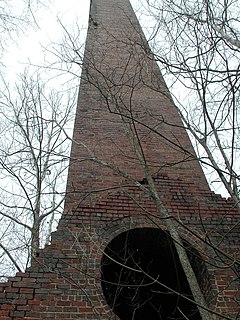Millfield Mine disaster

Sunday Creek Mine No. 6
|
|
| Date | November 5, 1930 |
|---|---|
| Location | Millfield, Ohio |
| Coordinates | 39°26′00″N 82°04′39″W / 39.433236°N 82.077614°WCoordinates: 39°26′00″N 82°04′39″W / 39.433236°N 82.077614°W |
| Cause | Accumulation of gas sparked by electrical arc between fallen trolley wire and rail |
| Deaths | 82 |
The Millfield Mine disaster occurred November 5, 1930, at the Sunday Creek Coal Company Poston Mine Number 6 in Dover Township, Athens County, in the U.S. state of Ohio. It was the state's worst mine disaster, killing 82 men.
Poston Mine Number 6 was said to be the Sunday Creek Coal Company's best mine and safest in the Hocking Valley. The explosion occurred 10,200 feet from the main shaft around 11:45 am. It was the result of an accumulation of gas in section 6 North, which was known for being gassy. The ignition was believed to be caused by an electrical arc between a fallen trolley wire and the rail. The section of the trolley rail where the explosion occurred was broken and therefore inactive. There was no reason for power to be on that line. The explosion caused many of the walls to cave in, wrecking the interior. It was so powerful that cars were pulled off tracks and beams were twisted up to 760 feet from the main shaft. Equipment was also found scorched near the explosion site.
The mine has recently undergone improvement and they were currently in the process of making more. The President of Sunday Creek Coal Company, W.E. Tytus, was giving other top executives a tour of the new safety equipment at the time of the explosion. They entered the main shaft half an hour previous to the explosion and had made it about one and a half miles into the mine. These men were killed in the disaster.
There were about 250 men at the mine that day and many of them were able escape after the explosion. Nearly 120 men escaped from the interior of the mine one way or another. Many of them used the ventilation shafts as exits. Most of the men lost in the disaster died from carbon monoxide asphyxiation. Only two men were believed to have been killed by serious burns from explosion. Distress calls were made to Columbus, Nelsonville, Cambridge, and Pittsburgh. Twenty-four Red Cross nurses, local doctors, and Salvation Army volunteers came to help the injured. About four hours after the explosion, the Chief Inspector, W.E. Smith, of the United States Bureau of Mines and three other inspectors arrived with mine rescue teams and equipment. Ten hours after the explosion, a rescue team found 19 men that barricaded themselves from the gas after the explosion. They used sheets of burlap, mud and sticks to protect themselves from the Carbon Monoxide. Only two of them were found conscious, but all survived. They were about three miles from the shaft entrance. Foreman John Dean was responsible for saving these men. He led the survivors to a ventilation partition used to protect them and risked his life in several trips.
...
Wikipedia
